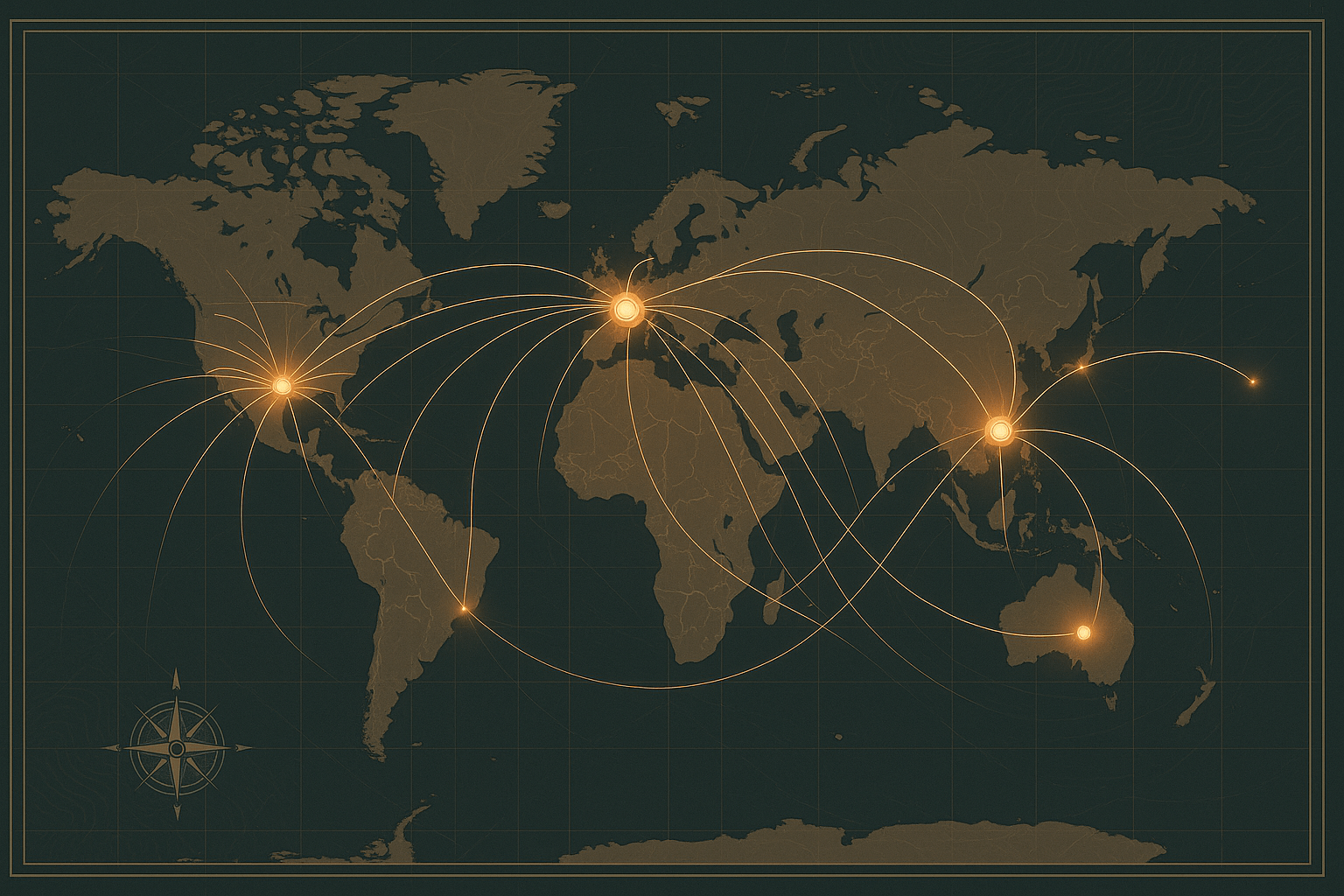The Great Global Talent Shift: Donor and Recipient Nations
At its core, the geography of brain drain is a story of flows between two types of nations: donors and recipients. These flows are not random; they follow well-established economic, linguistic, and historical pathways, creating distinct transcontinental talent pipelines.
The Primary Donor Regions
Donor countries are typically characterized by large, young populations, strong educational systems that produce more graduates than the local economy can absorb, and a lack of high-level research and development opportunities. Key donor regions include:
- South and East Asia: India and China are the titans of talent export. India supplies a vast number of IT professionals, engineers, and doctors to the Anglosphere, while China is a leading source of STEM students and researchers for universities across North America and Europe.
- Sub-Saharan Africa: Nations like Nigeria, Ghana, and Ethiopia experience a significant outflow of healthcare professionals. It’s a stark reality that there are often more doctors trained in certain African countries working in the UK or the US than in their home nations.
- Eastern Europe: Following the expansion of the European Union, countries like Poland, Romania, and the Baltic states saw a significant migration of skilled workers, from construction managers to software developers, to economic powerhouses like Germany and the UK.
- Latin America & the Caribbean: Mexico provides a steady stream of skilled professionals and technicians to its northern neighbor, the United States, while smaller Caribbean nations often lose their most educated citizens to Canada and the UK.
The Magnets for Human Capital
Recipient countries act as powerful magnets, pulling in talent with the promise of higher salaries, superior research facilities, political stability, and a higher quality of life. These are the world’s innovation leaders:
- The United States: The undisputed heavyweight champion of talent attraction. Its world-class universities, unparalleled venture capital ecosystem, and iconic innovation hubs make it the top destination for ambitious minds.
- The United Kingdom: With London as a global financial center and the “golden triangle” of universities (Oxford, Cambridge, London), the UK is a major hub for finance, law, and scientific research.
- Canada & Australia: These countries have leveraged points-based immigration systems to strategically attract the specific skills their economies need, from tradespeople to tech entrepreneurs, offering a high standard of living as a key incentive.
- Germany: As Europe’s industrial and engineering heartland, Germany is a prime destination for engineers, researchers, and manufacturing experts, particularly from Southern and Eastern Europe.
The Power of Place: Why Talent Clusters in Specific Cities
The brain drain doesn’t just flow from one country to another; it concentrates in hyper-specific geographic locations. This phenomenon, known as agglomeration, is where human geography truly comes alive. Talent attracts more talent, creating a self-reinforcing cycle of innovation and opportunity.
Think of Silicon Valley in California. It isn’t just a random collection of tech companies. It’s a dense ecosystem—a unique geographical space containing Stanford University, venture capital firms on Sand Hill Road, tech giants like Apple and Google, and a critical mass of engineers, designers, and entrepreneurs. This density creates knowledge spillovers, where ideas are exchanged informally in coffee shops and meetups, accelerating innovation at a pace impossible to replicate in isolation.
Other global talent clusters include:
- The Boston-Cambridge Area (USA): A world leader in biotechnology and life sciences, anchored by Harvard and MIT.
- The Toronto-Waterloo Corridor (Canada): A rapidly growing hub for Artificial Intelligence (AI) research and startups.
- London (UK): A dominant force in FinTech, where finance and technology geographically collide.
- Bangalore (India): A prime example of a talent hub in a donor country, now a major IT service and R&D center.
From “Brain Drain” to “Brain Circulation”
The term “brain drain” implies a permanent, one-way loss, but the modern reality is more nuanced. Many geographers and economists now prefer the term “brain circulation”, which acknowledges that the flow of talent is not always a zero-sum game.
Diaspora networks are a powerful force for development. Skilled migrants often send significant financial capital back home in the form of remittances, which in many countries exceeds foreign aid. But the transfer is more than just money. These networks also facilitate:
- Knowledge Transfer: Expatriates share new skills, business practices, and technologies with their colleagues back home.
- Diaspora Investment: Successful migrants often invest in or start businesses in their countries of origin. The tech boom in Bangalore was significantly fueled by Indian engineers returning from Silicon Valley, bringing with them capital, expertise, and invaluable networks.
- Return Migration: When skilled workers return home, they bring back a wealth of experience, effectively creating a “brain gain” for their home country.
This circulation transforms a simple map of one-way flows into a complex web of interconnected nodes, where talent and capital move in multiple directions.
The Evolving Map: Future Frontiers of Talent Migration
The geography of brain drain is not static. New trends are reshaping the map:
The Rise of New Hubs: Cities like Singapore, Dubai, and Shenzhen are investing heavily to become the next global talent magnets, challenging the traditional dominance of the West.
South-South Migration: Increasingly, skilled migration occurs between developing countries. A Kenyan doctor might move to South Africa, or a Filipino engineer to Malaysia, seeking better opportunities closer to home.
The Remote Work Revolution: The COVID-19 pandemic decoupled work from a physical office for many skilled professionals. While this may not end the dominance of hubs—as innovation still thrives on density—it has created a new geography based on lifestyle and time zones. A software developer might work for a company in San Francisco while living in Lisbon, creating a new, digitally-enabled layer on the talent map.
Ultimately, mapping the global brain drain reveals a fundamental truth: human potential, like water, flows towards opportunity. This movement enriches some landscapes while challenging others. Understanding its geography—the channels, the pools, and the currents—is essential to navigating the future of global innovation and development.
